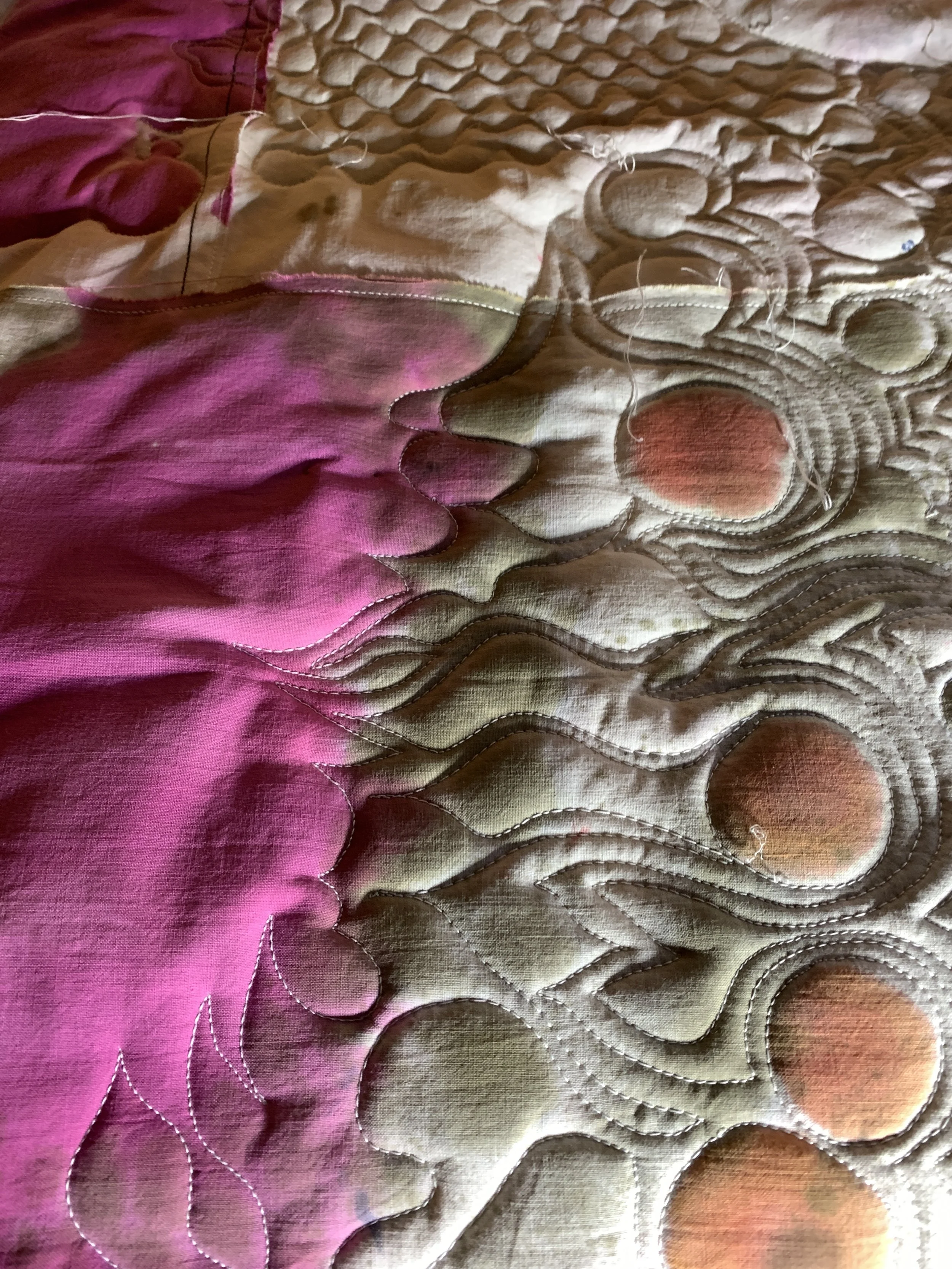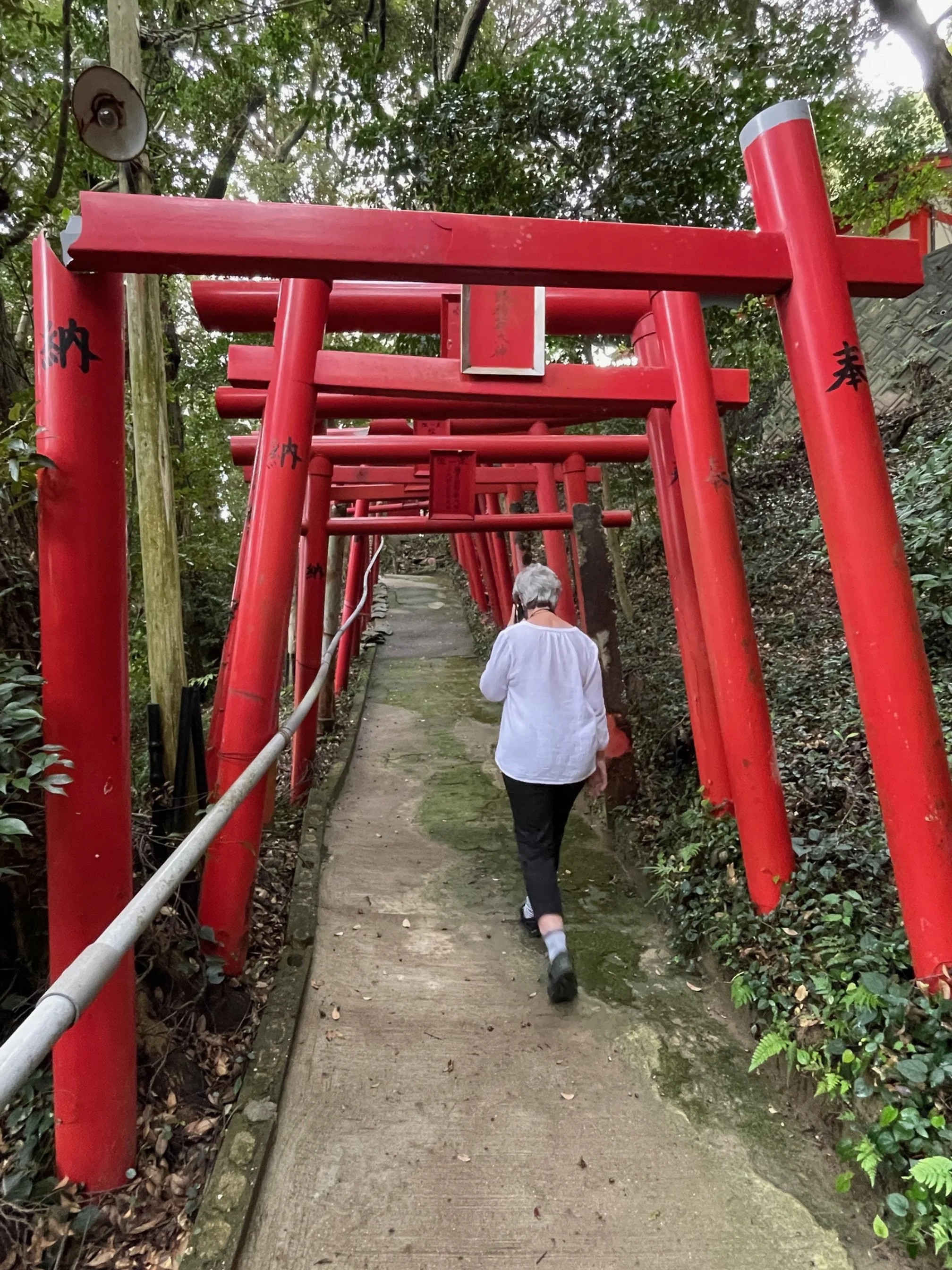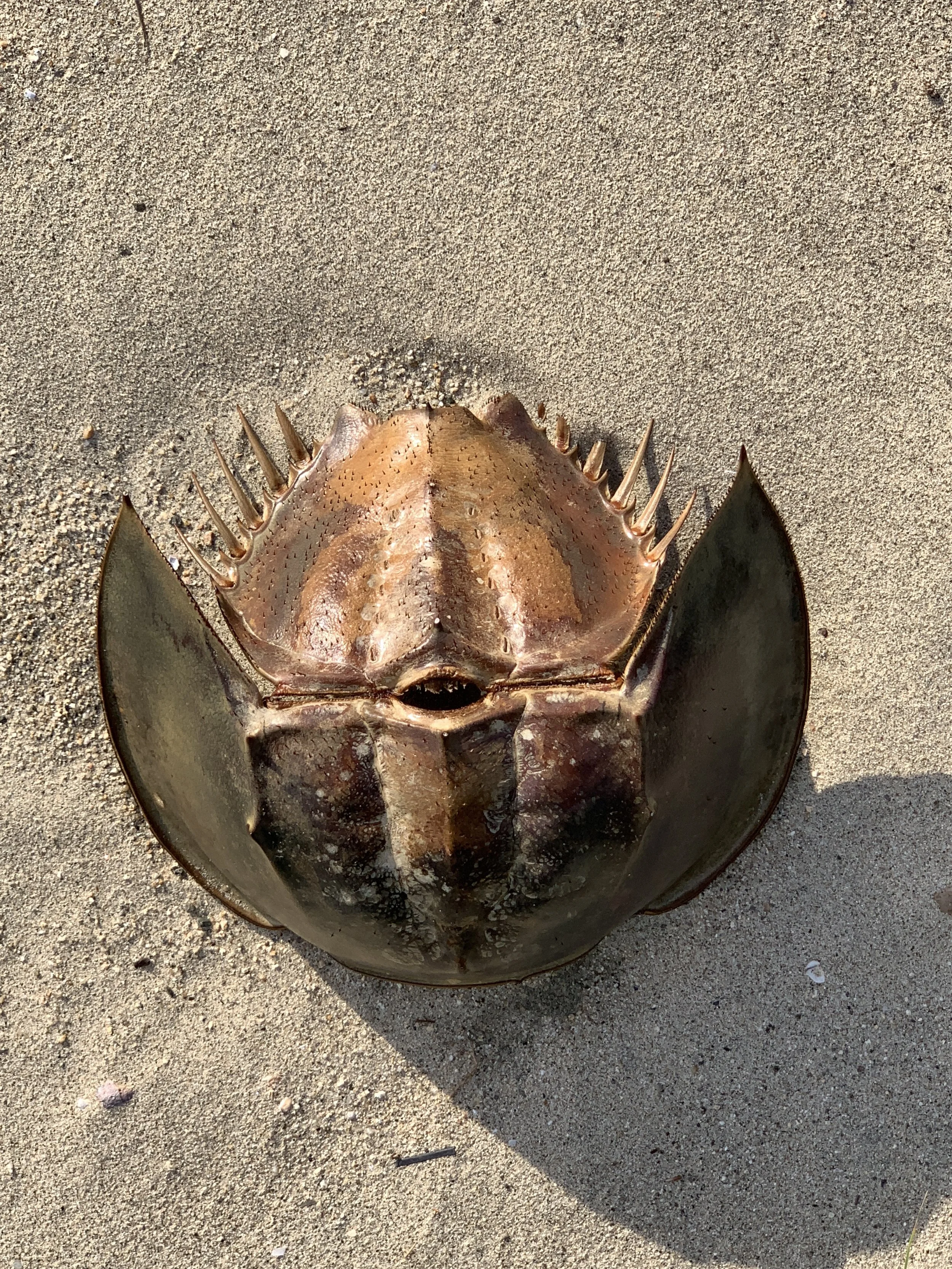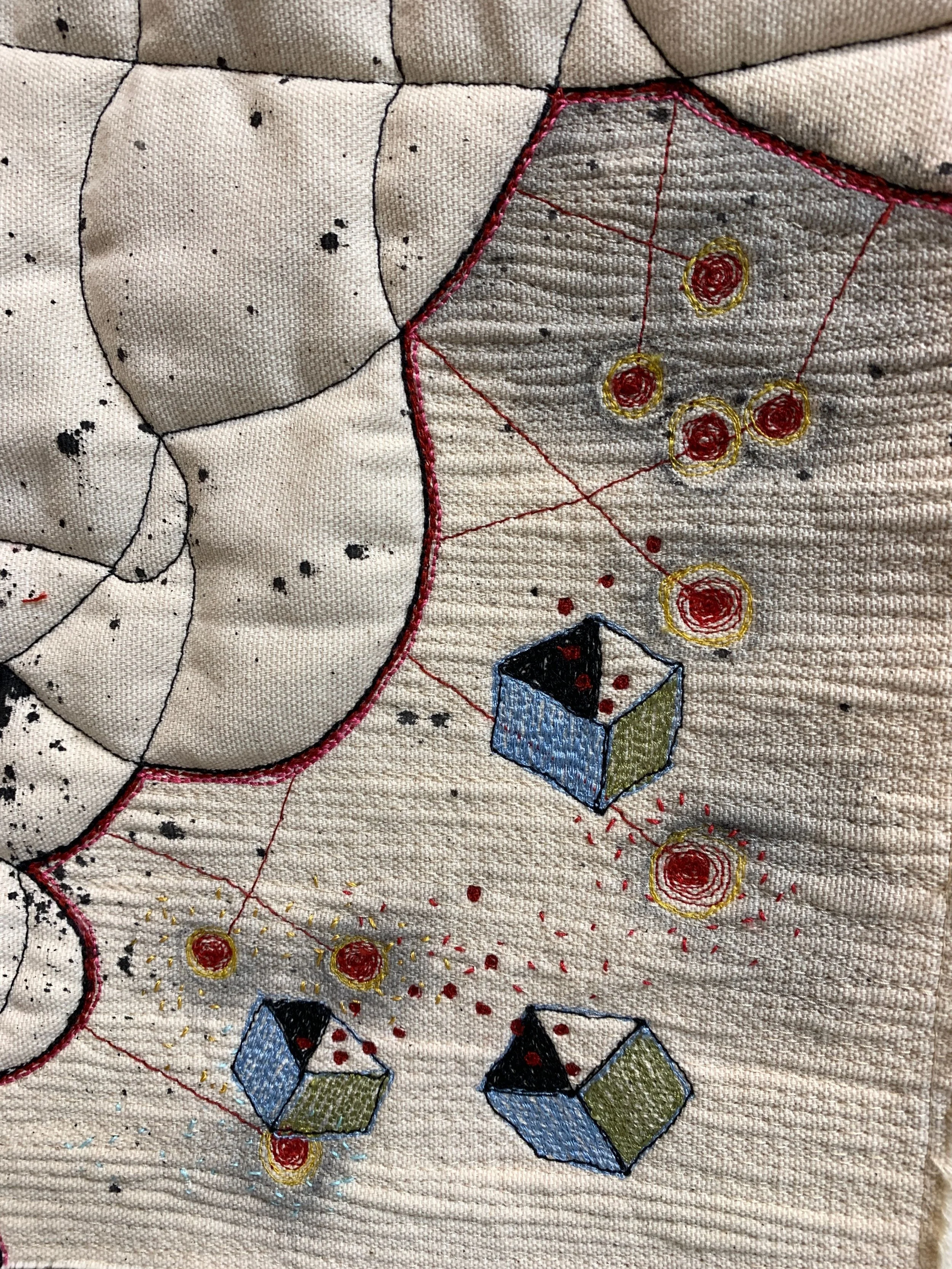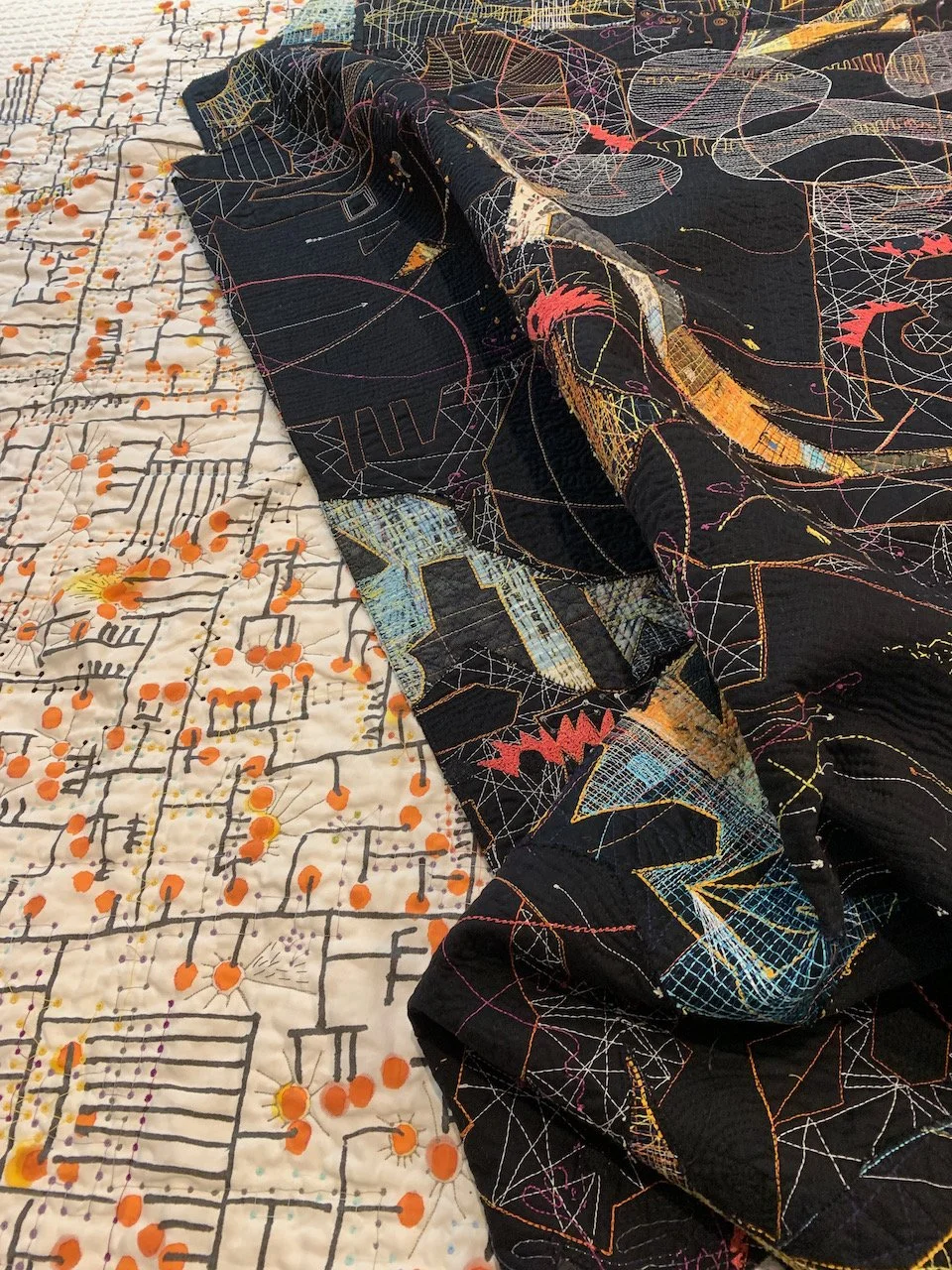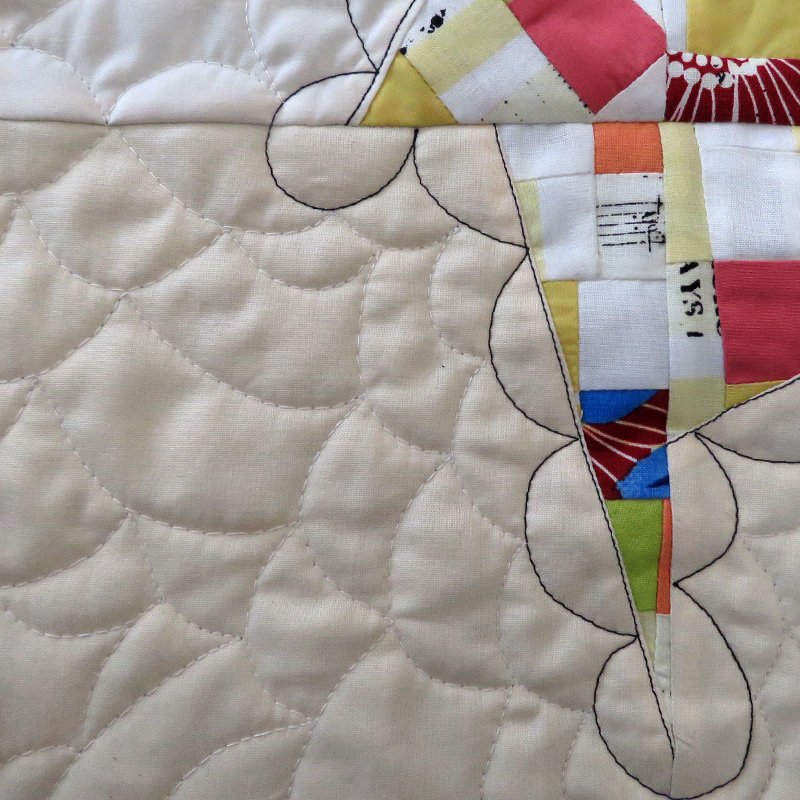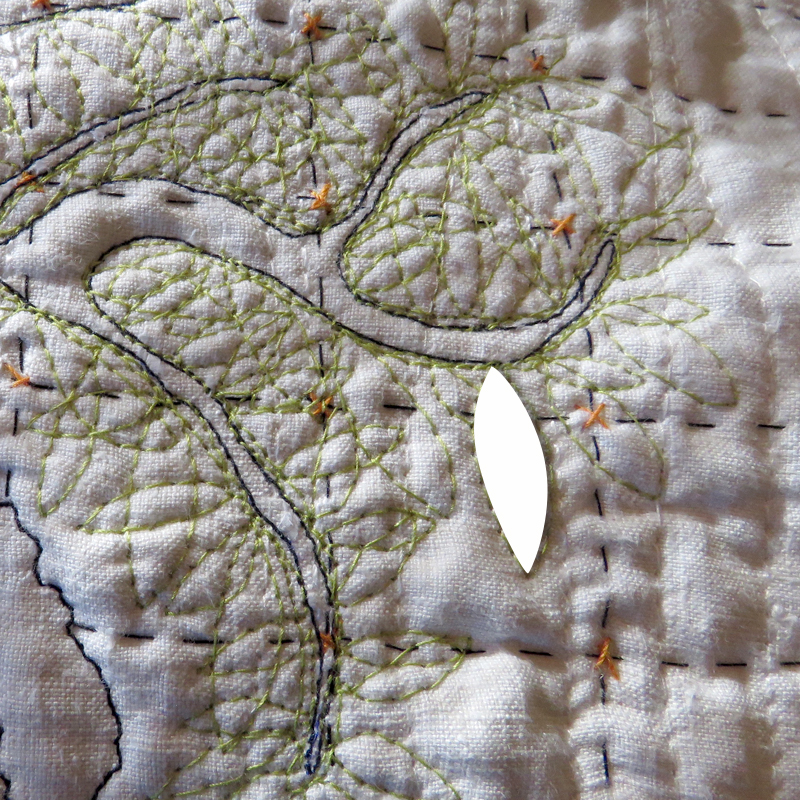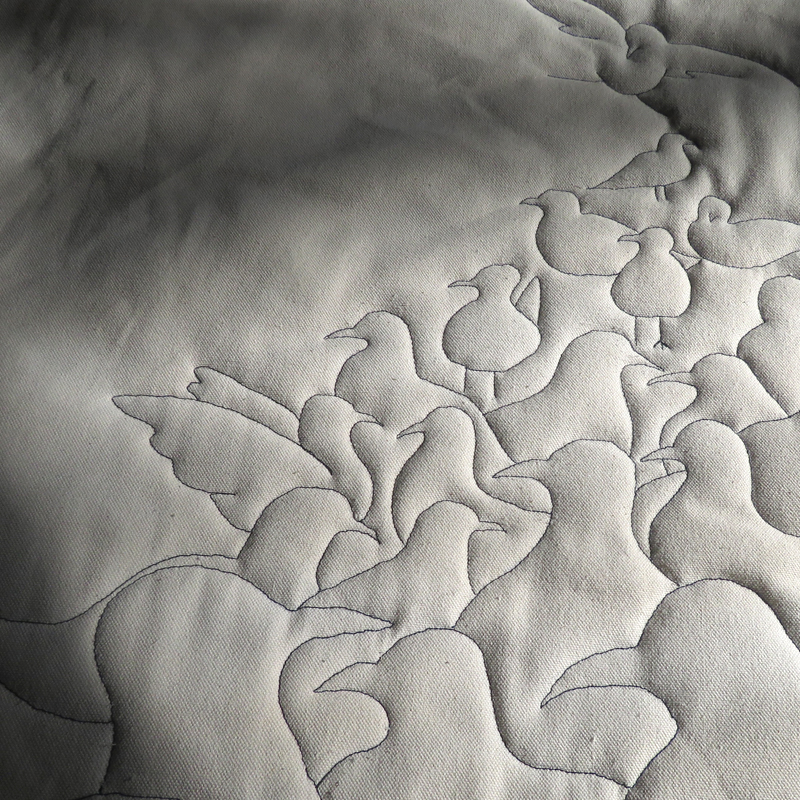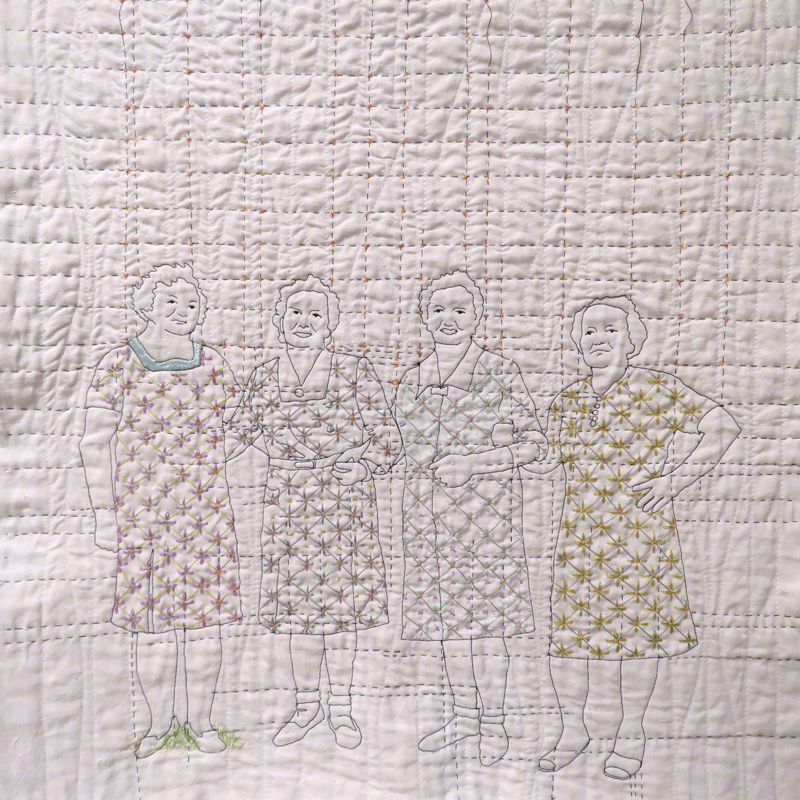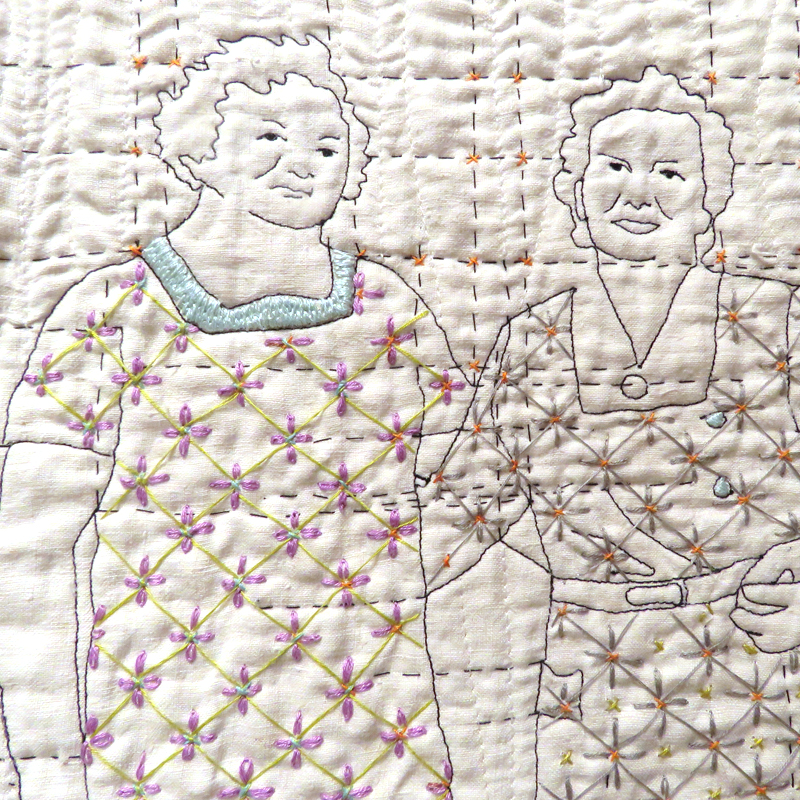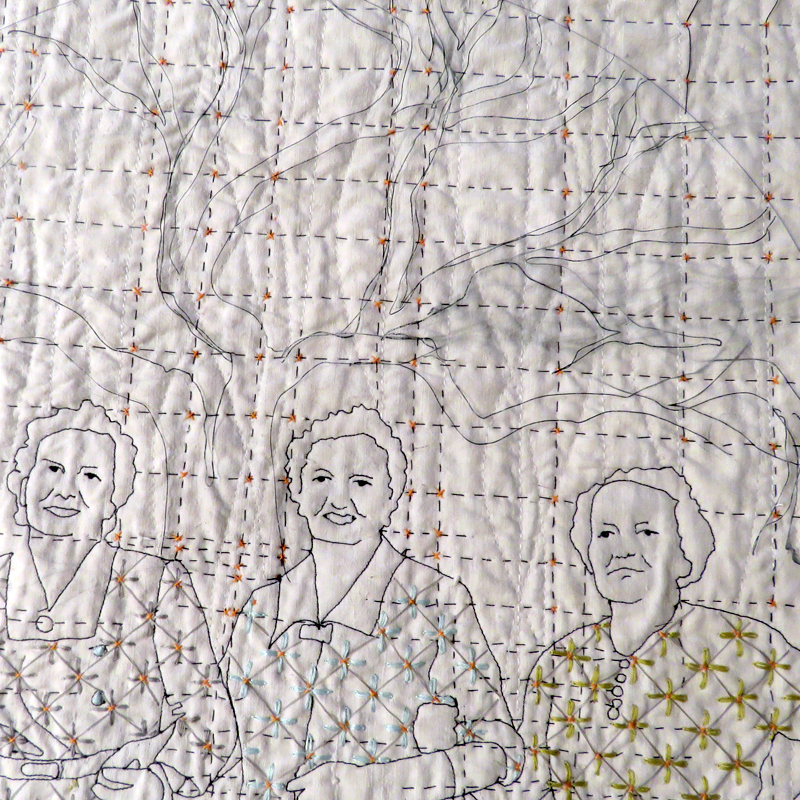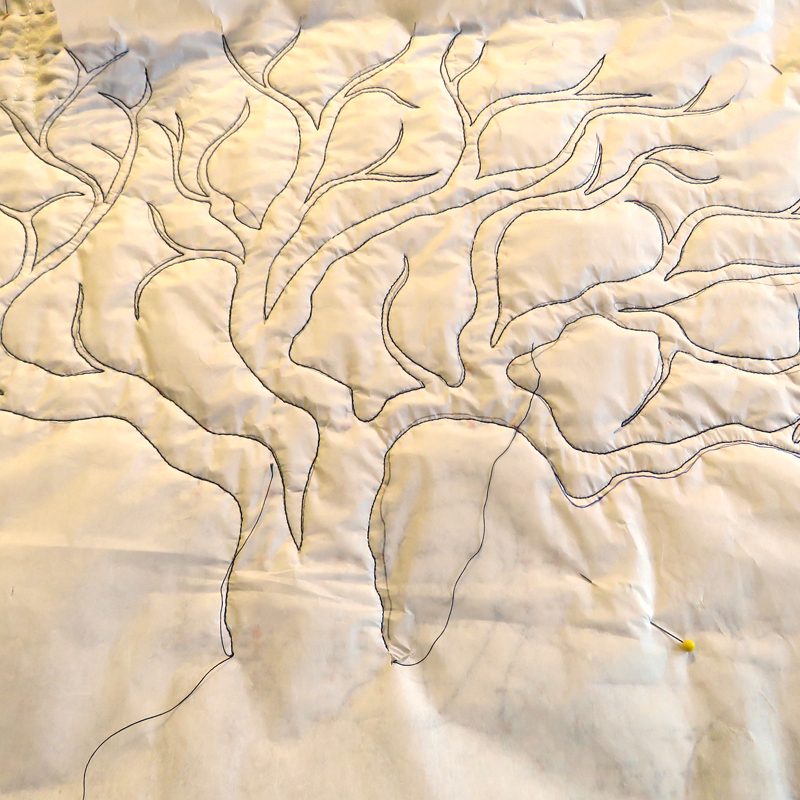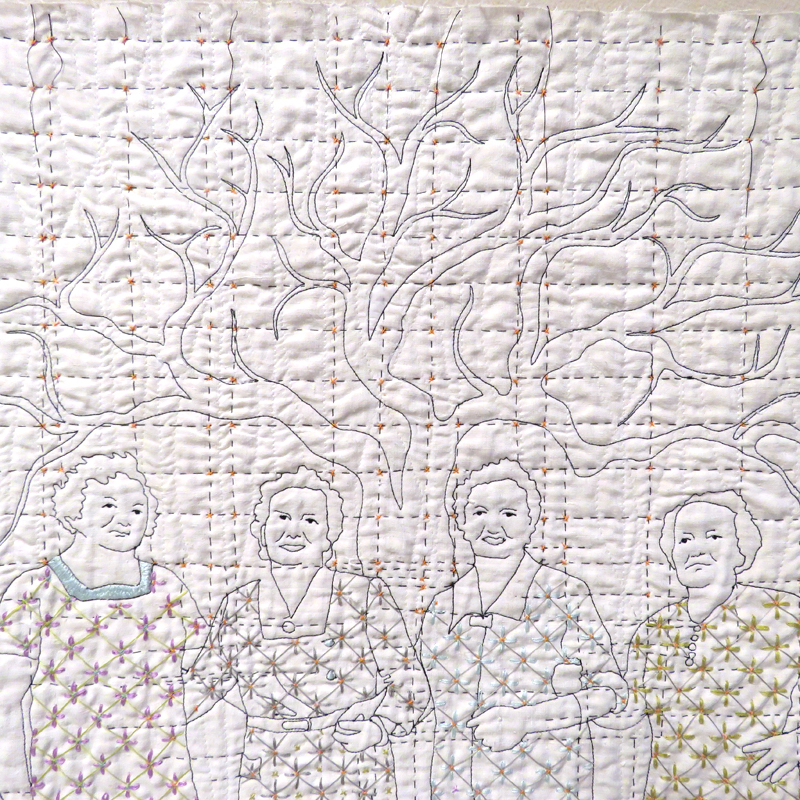I show up. Every day. for hours. and hours. It's a nest. This week has been particularly intense due to my goal of finishing a number of lingerers — those pieces that linger on the draft board without a finished edge, without a way to hang themselves, without a final yes in my final work-in-progress voting booth.
Here, Silent Witnesses is on the trimming board.
So I finished a few, hand-sewing facings and hanging sleeves. Fixing that little divot of stitching that bugged me. Adding just a bit more detail. Trimming excess.
I focused in on the details of craft.
My favorite thimble, a metal tipped silicone model, is a must have when finalizing the details of facings and hanging sleeves. This piece was done on canvas, so pushing the needle through the facing and fabric back proved difficult. I was tempted to just glue them down. But using an embroidery needle and pushing it through with that metal tip worked.
Refuge needed more marks and texture.
Finishing makes me edgy and still at the same time. I count stitches, measure space and drift into repetition. My brain goes into non-verbal mode. I look at the endless edge that needs turning and call upon my inner, resolute put-my-head-down-and-do-it mood that stops everything else. At the end my shoulders ache and I am eager to clear away the boards.
Scattered showers needed some rain.
Don't get me wrong, I can be distracted. Answering emails, looking for lunch companions, organizing one last shelf of collected debris provide respite. But finishing is its own reward. It stops a thought and allows it to move on. It shows the weaknesses of a piece and gives me an avenue to pursue the strengths.
The boards are cleared. Space allows new thoughts. Ready or not, here I come.









